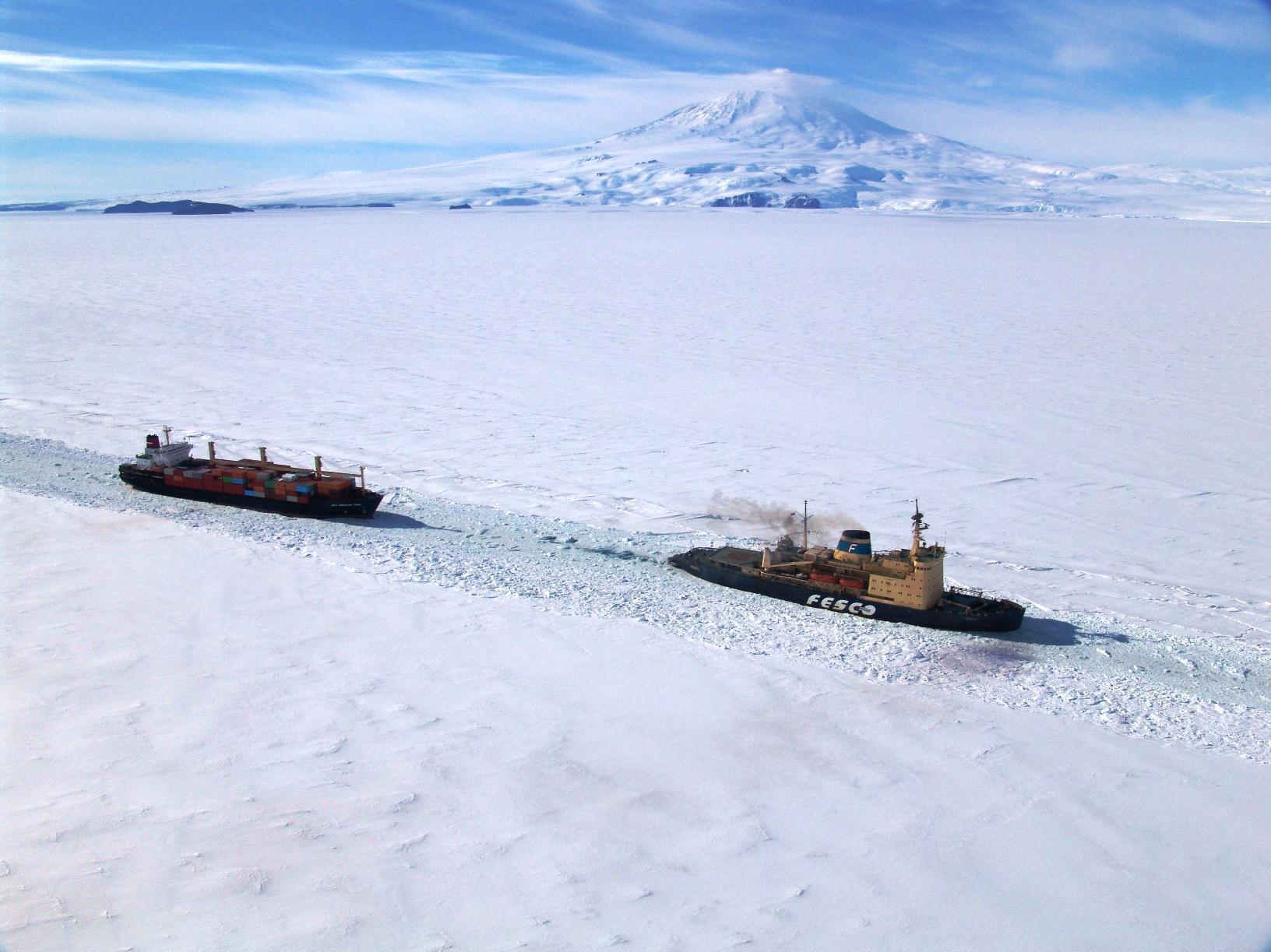08.24.10
World Wide Weather #14: McMurdo Station, Ross Island, Antarctica
This week’s post in the global weather and climate series features McMurdo Station, Antarctica.

Russian icebreaker leading an American container ship to McMurdo Station on Ross Island, during Operation Deep Freeze 2006. Mount Erebus is in the background. Courtesy of Wikipedia.
Located on Ross Island, on the shore of McMurdo Sound, McMurdo Station is a US Antarctic research station at 78 °S. Ross Island is home to about half a million Adélie Penguins and one active volcano, Mount Erebus. The largest community in Antarctica, McMurdo Station is capable of supporting up to 1,258 people. The population in summer is around 1,100, while in winter it is less than 200. McMurdo is 2,200 miles due south of New Zealand.
A few more facts about McMurdo Station (weather data from Antarctic Connection):
- Time zone: New Zealand Standard Time (UTC+12) or New Zealand Daylight Time (UTC+13)
- Elevation: 78 feet above mean sea level
- Climate zone: Polar desert
- Average high temperature: 7 °F (-13 °C)
- Average low temperature: -5 °F (-20 °C)
- Record high temperature: 49 °F (9 °C)
- Record low temperature: -59 °F (-50 °C)
- Average annual precipitation (liquid water equivalent of the snow): 7.5 inches (190 mm)
Current weather: Currently it is winter in the Southern Hemisphere, although spring is on its way. The temperature at McMurdo right now is -6 °F, with light snow falling. The sun has just risen. Weather Underground says the sun rises as 10:37 am NZST today and will set at 3:16 pm. Tomorrow will be 22 minutes longer.
McMurdo, unlike Amundsen-Scott, which I described a couple of months ago, is not in the middle of a continent of ice at over 9,000 feet high. Weather extremes are not quite as bad as at the South Pole, and the temperature gets a little warmer. However, once the sun sets in the winter, and Ross Island becomes connected to the continent by ice, temperatures can plummet.
Most of this week will be clear with highs between -5 and -11 °F and lows between -31 and -40 °F (over 50 °F below next week!).
You can see the current and forecast weather at McMurdo on the Weather Underground page here.
For more information on McMurdo, here’s a link to Wikipedia. For information on Ross Island, here’s another link to Wikipedia.
Next Tuesday we’ll be back to looking at the weather and climate in another part of the globe. As always, if you have any comments or suggestions for future cities, please leave a comment on this post!